
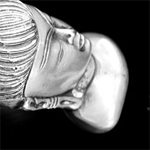
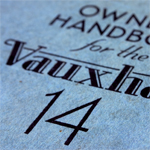


|

|

|

|
|---|
|
Home
|
FAQ
|
Photos
|
Name
|
Glovebox
|
Friends |
|
|
|
The Mahatma Rod still has the original owner's manual -- the same one it had 60 years ago when it first rolled off the dealer's lot. Let's thumb through. 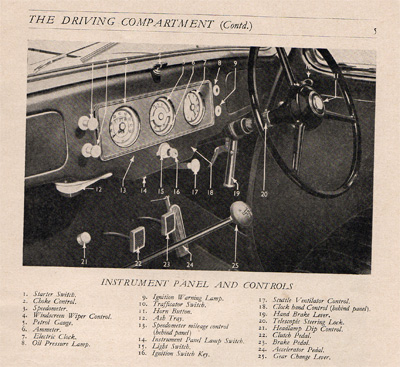
Here's one of the first illustrations. Interestingly, nothing in it would be out of place in a modern car except the "choke," one of the two buttons on the left. A few pages later are these instructions for opening the 60-year-old sunroof. So far, owning this car looks like tons of fun! 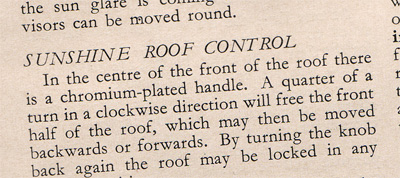
But just wait. The rest of the manual -- 30 out of a total of 39 pages -- is explains all the mechanical work you'll need to do. It's not pretty. You learn how to clean the carburetor, bleed the brakes, pack the wheel bearings with grease, "advance/retard" the ignition, among other things. At least the car comes with a nice big tool kit for all that work. 
It even includes a hammer. Of course, who tunes their car with a hammer? There's another interesting tool in the picture: The hand crank. Yes, the car has a hand crank for starting the engine. The manual says the crank is needed only on the "rare occasions" when the electric starter fails. Let's hope "rare" means "never," because the manual doesn't actually explain how to use the crank. All it does is explain how to open the crank-hole cover on the front bumper. After that you're on your own. No kidding: 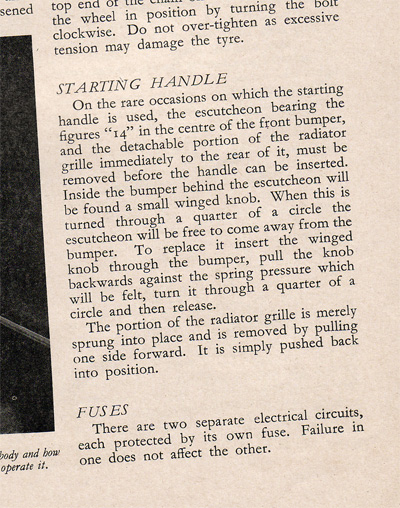
Notice the friendly euphemism for "crank." It's a "starting handle," as if that somehow makes it reasonable to start your car by sticking a steel rod into the engine. Any volunteers? I suppose that's enough of the manual for today. In the future we'll look more closely at the manual's "centerfold" -- a two-page chart detailing each of the gearboxes, propeller shafts, pivot pins, sumps, spindles, grease-gun "nipples" and other friction points you'll need to keep lubed. There are 25 of them. Many are conveniently located on the car's underbelly. Happy motoring!
The next booklet, "Inside Story," was published by Vauxhall in the 1940s to explain how cars work. That's the Mahatma Rod on the cover. 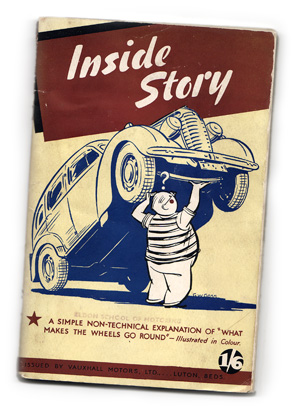
Strangely, it opens with a poem. Below are the closing lines of this surprisingly passionate ode. As you read them, you might ask yourself, why did anyone think this was a good idea?
Let us ignore the jibes The rest of the book mostly consists of the fat man from the cover walking around inside of car parts and scratching his head.
Last but not least, here's a British sales brochure from the 1940s. At first glance, the cover seems innocent enough. But look again -- something isn't quite right here. Why is Dad's face completely blacked out? 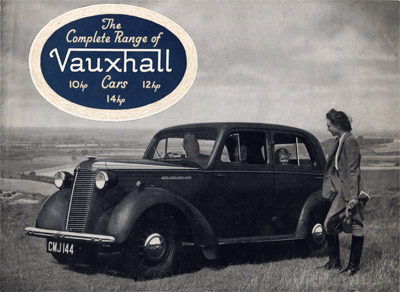
We hope it has nothing to do with the fact that Mom's carrying a riding crop. Have a nice trip, kids! 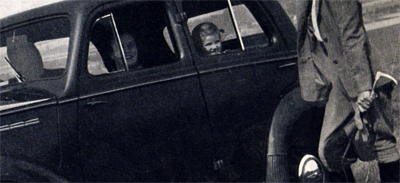
Thanks for your interest in the Mahatma Rod. Any questions please write to:
|